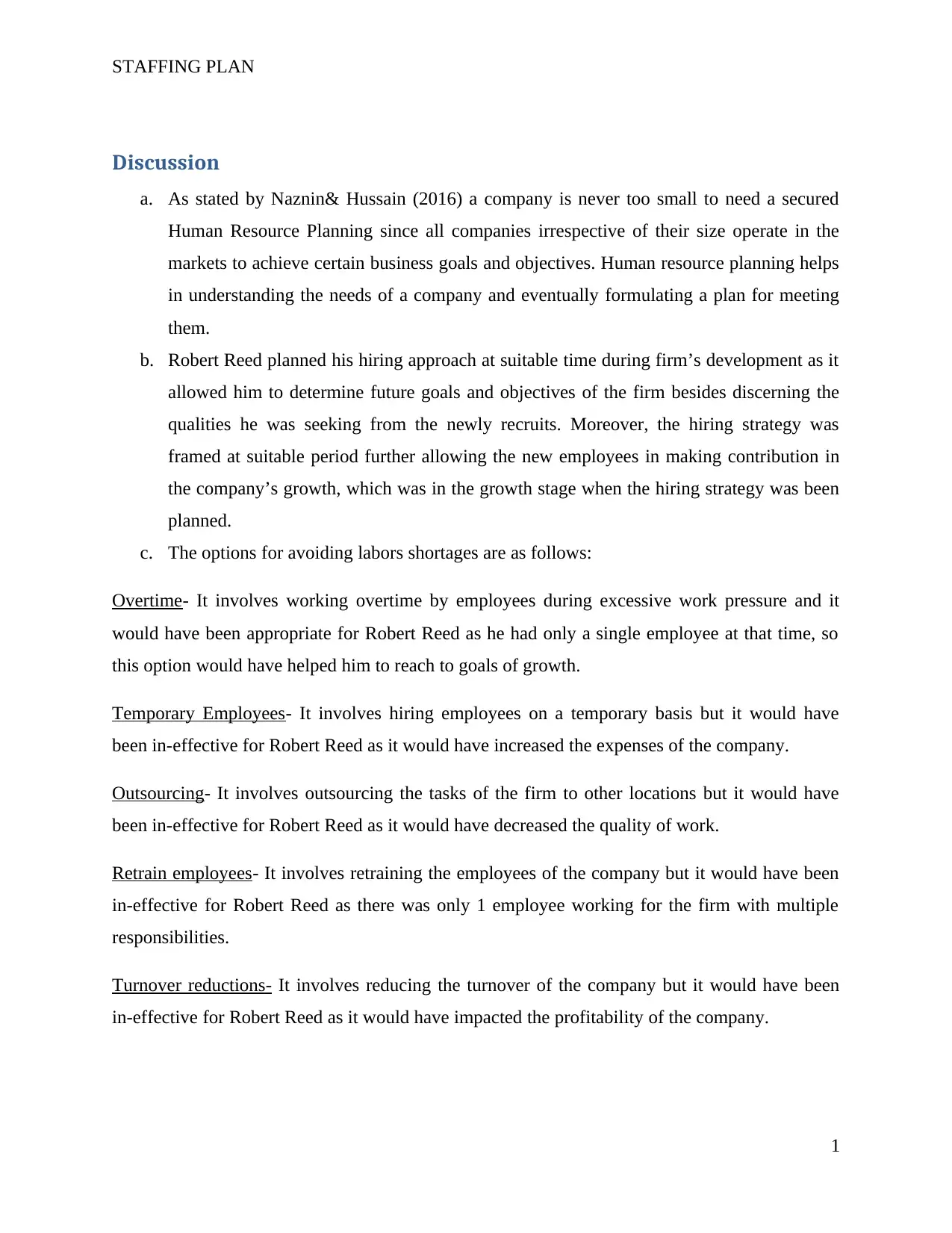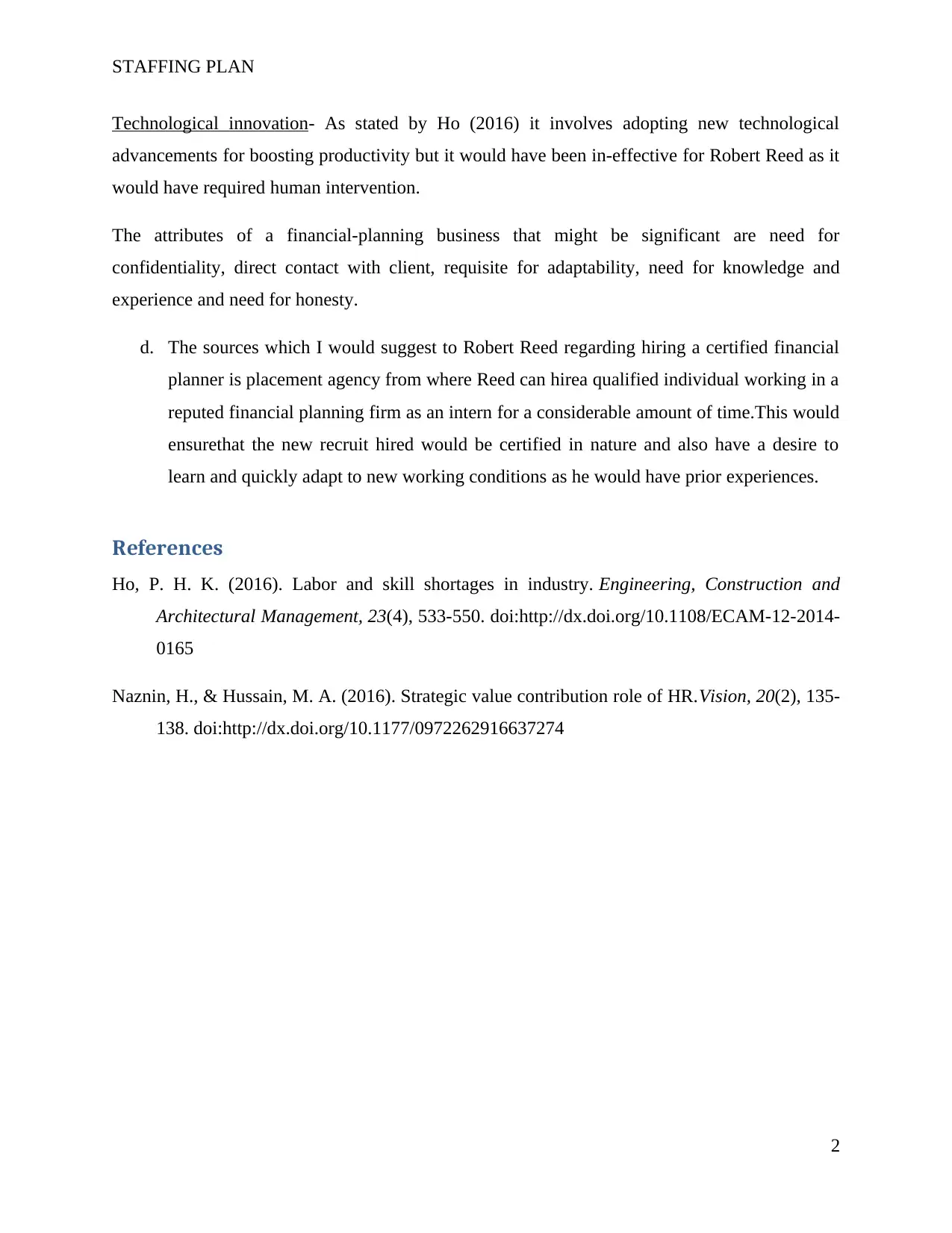HR Planning Discussion: A Staffing Plan with a Big Impact
VerifiedAdded on 2023/04/07
|3
|491
|207
Discussion Board Post
AI Summary
This assignment is a discussion board post addressing HR planning in small businesses, specifically focusing on a financial advisory firm. It analyzes the importance of HR planning regardless of company size and evaluates the timing of Robert Reed's hiring strategy in relation to his firm's growth. The post reviews options for avoiding labor shortages, considering the unique attributes of a financial-planning business, such as confidentiality and direct client contact. Additionally, it suggests recruitment sources for hiring a certified financial planner, emphasizing the value of placement agencies and internships to find qualified and adaptable candidates. The discussion demonstrates critical thinking by applying HR concepts to a real-world scenario and providing practical recommendations.
1 out of 3







![[object Object]](/_next/static/media/star-bottom.7253800d.svg)